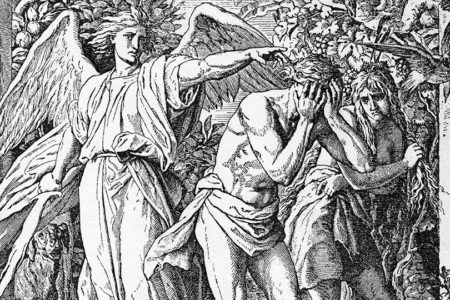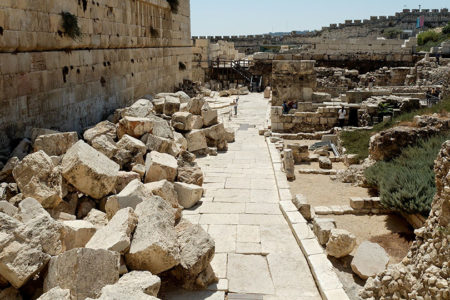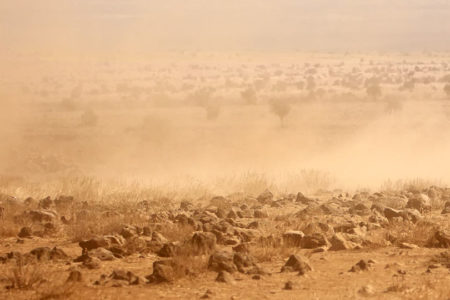From Throne to Scrub Mop Lamentations 1
Words fail in our attempt to explain the horror some people are called on to endure in life. Whether it be the prophet Jeremiah or the victims of the Holocaust of World War II, the Roman destruction of Israel in A.C. 70, or the Babylonian destruction of 586 B.C., words fail.
If the death of one person diminishes us all, how can we come to grips with the deaths of thousands or millions? Worse yet is the tendency to project heroic and stoic characteristics on these real people who endured such horrors, wracked by pain and anguish. Their plaintive cries minister to us in at least three ways: They warn us that (1) sin cannot be ignored; (2) that even in the darkest of times, God is there; and (3) that after the darkness comes the dawn.
Historical Overview
Jeremiah is called the “weeping prophet.” English dictionaries contain a word coined from his sorrows: jeremiad, “a lamentation, a lugubrious complaint.”1 His name means “Jehovah has appointed.”
Jeremiah was of priestly stock. He never knew the joy of marriage but for 40 years engaged in pastoral, prophetic work under five kings of Judah from 627 B.C. to beyond the horrific destruction of Jerusalem and the first Temple at the hands of the babylonians in 586 B.C.
It is certainly significant that God gave Jerusalem 40 years to repent of her sin, not once but twice in her history, before He allowed judgment to fall. The second time covers the period of the Gospels and the book of Acts, from christ’s ministry around A.D. 30 to the Roman conquest of Jerusalem and destruction of the second Temple in A.D. 70.
Jeremiah was considered a traitor by his own government for predicting the fall of Jerusalem to the Babylonians and encouraging the godly to submit to the decreed judgment. General Nebuchadnezzar led his father’s armies to Nineveh and Carchemish, where he vanquished the Assyrian Empire despite the help it received from Egypt.
Nebuchadnezzar continued south to Jerusalem, securing its submission in 605 B.C. The death of his father forced his hasty departure. Daniel and three Hebrew youths (renamed Shadrach, Meshach, and Abed-Nego, Dan. 1:7) were taken at this time.
With his succession to his father’s throne secured and the Judean king plotting intrigue, Nebuchadnezzar returned to Jerusalem in 597 B.C. in another show of strength. The prophet Ezekiel was taken to Babylon in the ensuing deportation, resulting in three great prophets ministering at the same time in three strategic locales: (1) Daniel in the capital city of Babylon, (2) Ezekiel in the Babylonian countryside with his fellow Judeans, and (3) Jeremiah in Jerusalem.
Jerusalem’s Troubles
In chapter 1 Jeremiah bewailed the destruction of the city of Jerusalem, describing its devastation (vv. 1–11) and subsequent anguish (vv. 12–22). In the first section, the prophet speaks. In the second section, the personified city speaks.
Jerusalem (a city) and Judah (by that time not only a tribe but a nation—the southern kingdom) are likened to an abandoned woman throughout chapter 1. She is a widow and slave (v. 1). Her friends and lovers forsake her (v. 2). She is a captive (v. 3). Her children are gone (v. 5). She is homeless (v. 7). She is an adulteress (v. 9). She is violated (v. 10), captured (v. 13), and drained of her lifeblood (v. 15).
Fortunately, she recognizes her sin, the first step in repentance (vv. 18, 20). The prophet identified with his people in the confession, as did other great men of God (Ezra 9; Neh. 9; Dan. 9).
It is common for authors to introduce themes and then review them in reverse order. Notice how verses 22, 21, 20, 19, 18, and 12 echo elements of verses 1, 2, 3, 4, 5, and 11.2 certain other important concepts repeat in the chapter. Lack of comfort or help is mentioned in verses 2, 7, 9, 16, 17, and 21. The Lord (Jehovah) is mentioned 10 times in the chapter; He is the prime mover. In fact, Babylon is not mentioned in the book—Nebuchadnezzar was only a tool in the hand of the Lord.
The great height from which Jerusalem fell is contrasted with the city’s former fullness in verse 1; the same Hebrew word is used for “full” and “great”: “How lonely sits the city that was full of people! How like a widow is she, Who was great among the nations!”
Jerusalem went from the throne to the scrub mop. At one time, Judah controlled Moab, Ammon, and Edom—nations that were related to her through Lot and Esau. Now they treacherously join with her enemy in the attack: “All her friends have dealt treacherously with her; They have become her enemies” (v. 2).
The “dire straits” of verse 3 are literal: “All her persecutors overtake her in dire straits,” a reference to the narrow mountain valleys leading away from Jerusalem, where her enemies ambushed her.
“Her princes have become like deer that find no pasture, that flee without strength before the pursuer” (v. 6). The princes could be the sons of King Zedekiah. The Babylonians murdered them in Zedekiah’s sight before blinding him. Jeremiah had prophesied that Zedekiah would be taken to Babylon (Jer. 32:5), but Ezekiel said, “‘yet he shall not see it [Babylon], though he shall die there’” (Ezek. 12:13).
Jerusalem lost sight of her Chosen People responsibilities (v. 9). Within Israelite society, only the Levitical priests could enter the Temple, but Gentiles had polluted it with their presence: “She has seen the nations enter her sanctuary, those whom You commanded not to enter Your assembly” (v. 10).
“They have given their valuables for food to restore life” (v. 11). The word for “valuables” speaks of the extremely precious items the Israelites reluctantly gave away just to eat and live another day.3
Despite the horrors of this national calamity, good arose. As Jerusalem personified speaks in verses 12–22, she acknowledges her sin and seeks the mercy of her God.
Through all of Israel’s darkest days of anguish and pain, God has always been there. And just as He cannot ignore sin, neither does He ignore repentance.
ENDNOTES
- The American College Dictionary, s.v. “jeremiad.”
- Daniel Grossberg, “Lamentations” in The Jewish Study Bible, ed. Adele Berlin and Marc Zvi
- R. K. Harrison, Jeremiah and Lamentations (Downers Grove, IL: InterVarsity press, 1973), 209.







